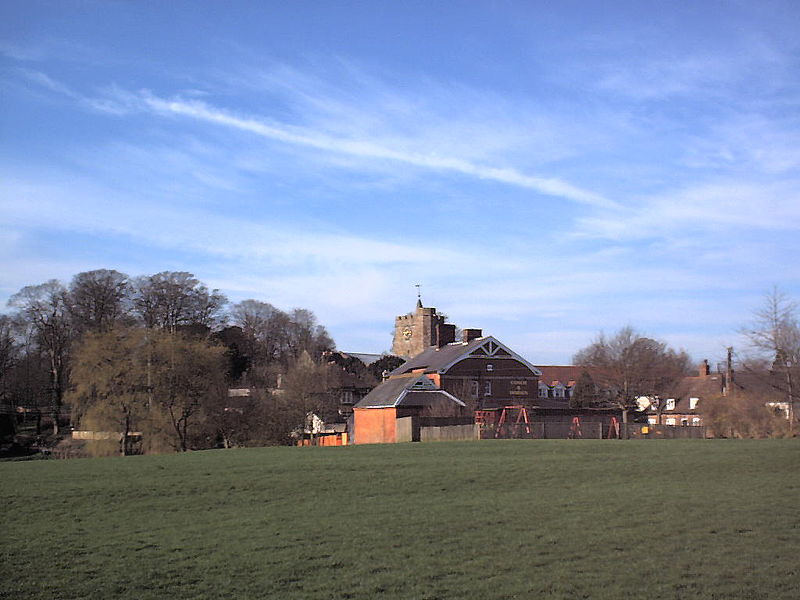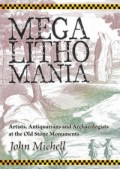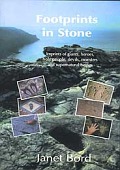<< Other Photo Pages >> Lyminge Anglo Saxon Feasting Hall - Ancient Palace in England in Kent
Submitted by bat400 on Monday, 10 February 2014 Page Views: 7315
DigsSite Name: Lyminge Anglo Saxon Feasting HallCountry: England County: Kent Type: Ancient Palace
Nearest Village: Lyminge
Map Ref: TR1620440970
Latitude: 51.127190N Longitude: 1.088470E
Condition:
| 5 | Perfect |
| 4 | Almost Perfect |
| 3 | Reasonable but with some damage |
| 2 | Ruined but still recognisable as an ancient site |
| 1 | Pretty much destroyed, possibly visible as crop marks |
| 0 | No data. |
| -1 | Completely destroyed |
| 5 | Superb |
| 4 | Good |
| 3 | Ordinary |
| 2 | Not Good |
| 1 | Awful |
| 0 | No data. |
| 5 | Can be driven to, probably with disabled access |
| 4 | Short walk on a footpath |
| 3 | Requiring a bit more of a walk |
| 2 | A long walk |
| 1 | In the middle of nowhere, a nightmare to find |
| 0 | No data. |
| 5 | co-ordinates taken by GPS or official recorded co-ordinates |
| 4 | co-ordinates scaled from a detailed map |
| 3 | co-ordinates scaled from a bad map |
| 2 | co-ordinates of the nearest village |
| 1 | co-ordinates of the nearest town |
| 0 | no data |
Internal Links:
External Links:
I have visited· I would like to visit
bat400 would like to visit

The Lyminge Feasting Hall is though to date to 600 CE (carbon dating pending.) Only the foundation trenches and postholes were found in the 2012 excavation season of the Lyminge Archaeological Project on Tayne Field in the heart of the village. Its rectangular post-in-trench construction measures 21×8.5m, makes it comparable to the grandest Saxon halls ever discovered, such as those at Yeavering in Northumberland and Cowdery’s Down in Hampshire.
Excavations are planned through 2014. Past presentations given by project director Dr Gabor Thomas (University of Reading Archaeology) can be seen here.
Note: Documenting Lyminge’s transition from a pagan royal “vill” into a significant Christian monastic center
You may be viewing yesterday's version of this page. To see the most up to date information please register for a free account.
Do not use the above information on other web sites or publications without permission of the contributor.
Nearby Images from Geograph Britain and Ireland:

©2008(licence)

©2015(licence)

©2008(licence)

©2008(licence)

©2008(licence)
The above images may not be of the site on this page, they are loaded from Geograph.
Please Submit an Image of this site or go out and take one for us!
Click here to see more info for this site
Nearby sites
Key: Red: member's photo, Blue: 3rd party photo, Yellow: other image, Green: no photo - please go there and take one, Grey: site destroyed
Download sites to:
KML (Google Earth)
GPX (GPS waypoints)
CSV (Garmin/Navman)
CSV (Excel)
To unlock full downloads you need to sign up as a Contributory Member. Otherwise downloads are limited to 50 sites.
Turn off the page maps and other distractions
Nearby sites listing. In the following links * = Image available
96m SSW 203° St. Eadburg's Well Holy Well or Sacred Spring (TR16174088)
199m SW 214° St. Ethelburga's Well (Lyminge)* Holy Well or Sacred Spring (TR161408)
889m NNE 22° Lyminge Barrow Round Barrow(s) (TR16504181)
1.9km N 355° Tumulus, Boyke Lane* Round Barrow(s) (TR15944290)
2.4km S 187° Tolsford Hill Barrows Round Barrow(s) (TR160386)
3.0km WNW 299° Tumulus farm Barrow* Round Barrow(s) (TR1348742346)
3.2km WNW 301° Stone Street Barrow Round Barrow(s) (TR13354250)
3.2km SE 142° Elm Gardens Mound Artificial Mound (TR183385)
3.3km NW 310° West Wood Barrows Barrow Cemetery (TR136430)
3.5km NW 325° Mockbegger Farm Barrow Round Barrow(s) (TR14074372)
3.8km WNW 297° Swinyard's Hill Tumulus Round Barrow(s) (TR12784255)
4.3km W 281° Stowting Court Barrow Round Barrow(s) (TR11904161)
4.6km N 2° Elhampark Wood Barrows* Round Barrow(s) (TR16154558)
5.0km SSW 196° Willow Wood Barrow Round Barrow(s) (TR15023612)
5.3km ENE 77° Little Foxholt Barrows Round Barrow(s) (TR21284239)
5.5km SE 125° Cherry Garden Hill Barrow* Round Barrow(s) (TR20833801)
6.0km ESE 123° Caesar's Camp (Folkstone)* Hillfort (TR214379)
6.1km S 183° Holywelle Holy Well or Sacred Spring (TR161349)
6.3km ESE 121° Castle Hill Barrows Round Barrow(s) (TR21723798)
6.6km ESE 117° Sugerloaf Hill Holy Well Holy Well or Sacred Spring (TR222382)
7.6km ENE 69° St John's Well (Swingfield) Holy Well or Sacred Spring (TR23224401)
8.0km NW 310° Shrub's Wood Long Barrow* Long Barrow (TR09914587)
8.4km SE 129° Folkestone moot stones* Marker Stone (TR22963589)
9.1km SW 234° Our Lady's Well (Court-At-Street) Holy Well or Sacred Spring (TR090353)
9.2km NNE 31° Breach Downs Barrows* Round Barrow(s) (TR20674900)
View more nearby sites and additional images






 We would like to know more about this location. Please feel free to add a brief description and any relevant information in your own language.
We would like to know more about this location. Please feel free to add a brief description and any relevant information in your own language. Wir möchten mehr über diese Stätte erfahren. Bitte zögern Sie nicht, eine kurze Beschreibung und relevante Informationen in Deutsch hinzuzufügen.
Wir möchten mehr über diese Stätte erfahren. Bitte zögern Sie nicht, eine kurze Beschreibung und relevante Informationen in Deutsch hinzuzufügen. Nous aimerions en savoir encore un peu sur les lieux. S'il vous plaît n'hesitez pas à ajouter une courte description et tous les renseignements pertinents dans votre propre langue.
Nous aimerions en savoir encore un peu sur les lieux. S'il vous plaît n'hesitez pas à ajouter une courte description et tous les renseignements pertinents dans votre propre langue. Quisieramos informarnos un poco más de las lugares. No dude en añadir una breve descripción y otros datos relevantes en su propio idioma.
Quisieramos informarnos un poco más de las lugares. No dude en añadir una breve descripción y otros datos relevantes en su propio idioma.